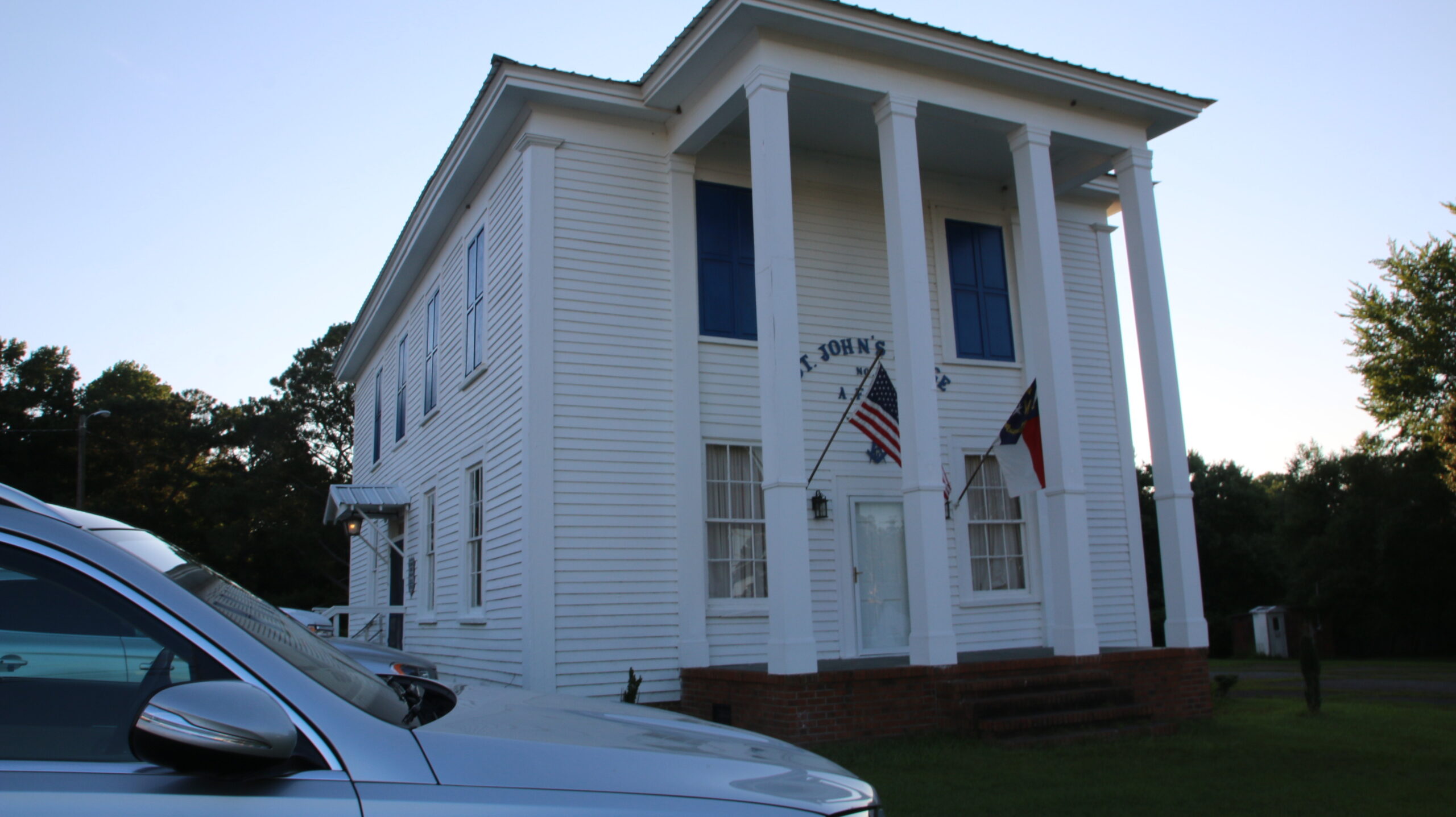KENANSVILLE — It’s only natural that Charles Ingram of Kenansville would take an interest in the long history of the town’s Masonic Lodge.
“As long as I can remember, I was brought to this lodge,” Ingram said during an interview with Duplin Journal inside the historic building. “My father was the Master of the Lodge in 1948, the year I was born.”
Ingram’s exposure to Freemasonry began early. As a boy, he regularly attended public events hosted at the lodge.
“Every year, the lodge has had an open installation of officers. That happens the first Thursday in January, even if it’s New Year’s Day,” said Ingram, a retired attorney. “My mother and father would attend those installations. There is a lot of tradition in Freemasonry, but especially with this lodge.”
The Masonic Lodge in Kenansville, officially known as St. John’s Lodge number 13, has deep historical roots. It was officially chartered on Nov. 20, 1788 — five months before George Washington’s inauguration as the first president of the United States. In fact, the charter was approved while North Carolina was still an independent state as North Carolina had not yet ratified the U.S. Constitution, a decision it would make in November 1789.
In 1941, the lodge held what it believed to be its sesquicentennial celebration, based on the mistaken belief that the lodge was chartered in 1791. That assumption later proved incorrect when historical research uncovered the accurate charter date of 1788 — meaning the true 150th anniversary would have occurred in 1938.

The members and leadership of the lodge read like a “who’s who” in Kenansville’s rich history, beginning with the first Grand Master, General James Kenan. Born in 1740 in Turkey, NC, Kenan would go on to be elected Sheriff of Duplin County in 1762 and later commanded the Duplin Regiment during the American Revolutionary War. He played a key role leading a group of volunteers against Scottish loyalists during the Battle of Moore’s Creek in 1776.
While the 1941 program offered a brief historical overview of the lodge, Ingram took the initiative to compile a more complete record. In 2003, he had created an updated history record which included past masters of the lodge. Ingram appears on that list and would later serve in higher positions statewide.
“In 1991, I was appointed junior Grand Steward of the Grand Lodge of North Carolina. That set me on a path so that in 1999, I was elected Grand Master of North Carolina,” Ingram said.
Other prominent local leaders who have served as Masters of St. John’s Lodge Number 13 include Dr. Guy Gooding, who was director of the Duplin County Health Department in the early 1930s, and Faison McGowan, who was the Duplin County accountant in the 1930s. Ingram said during those days, there was not a county manager, so the county accountant served in that role.
In 1945, Duplin County School Superintendent Owen Johnson was elected Master of the Lodge. He was a graduate of Trinity College, which would eventually be renamed Duke University.
The lodge met in various locations over the years until the current lodge building was completed in 1860. The prominent two-story white structure has been a fixture in downtown Kenansville ever since. However, its position on the property has changed. Originally built on the side of the lot, the lodge voted in the 1970s to move the building to the center. The structure was carefully jacked up and relocated to its present spot, where it now holds a place on the National Register of Historic Places.
The building has served multiple community purposes. Its bottom floor was once used by the local Women’s Club and, at one point, even functioned as a classroom. Today, the walls of that lower level are adorned with photographs of past Grand Masters with the exception of some photos that were lost to damage caused by Hurricane Florence.
The Masons of Kenansville have had active roles in the community and have also supported various groups and organizations.
“Freemasons are not a charity, but we are charitable,” Ingram described their help in the community.
Ingram continues to be a member of the lodge and is always on the lookout for new tidbits about the history surrounding the Masons of Duplin County and the contributions they have made to the community.
 Twitter
Twitter Facebook
Facebook Instagram
Instagram





